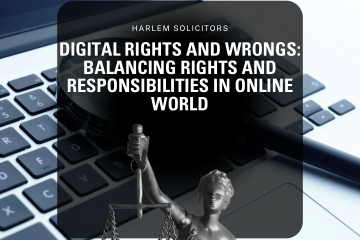In Nigeria, the Nigerian Communications Commission, NCC, is the sole regulatory body as far as telecommunications matters are concerned. However, some other agencies have the powers to regulate some specific aspects of telecommunications network infrastructure deployment in their localities which will be mentioned in this discourse.
Prior to 1992, Nigerian Telecommunications Limited (NITEL), established in 1985, was the primary provider of both fixed and mobile cellular services. It was not until 1999 that the regime of General Olusegun Obasanjo orchestrated the formulation of a new National Policy on Telecommunications, published in 2000.
The 2000 policy formed the fulcrum of two separate legislative initiatives that led to the promulgation of the Nigerian Communications Act (the ‘NCA or NCC Act’), Chapter 97, Laws of the Federation of Nigeria, 2004, which formed the root for the liberalisation of the telecommunications sector, major reforms and licensing. The NCA Act of 2003, which is now the principal law on telecommunications repealed and replaced the Nigerian Communications Act of 1992.
The NCC Act expressly states the major focus of the Act. Section 1 of the NCC Act provides that:
“The primary object of this Act is to create and provide a regulatory framework for the Nigerian communications industry and all matters related thereto…”
In furtherance of this, the NCC Act provided for the establishment of a Commission, the Nigerian Communication Commission, NCC, under Section 3(1) of the NCC Act. The powers of the NCC are stipulated under Section 3 of the NCC Act . Section 70 of the NCC Act empowers the NCC to make publish regulations on matters such as, but not limited to, written authorizations, permits, assignments and licenses granted or issued under the NCC Act as well as other stipulated functions. Therefore, the NCC developed, through an inclusive process, robust Regulations and Guidelines or subsidiary laws for the telecommunications sector. One of such various Regulations is The Guidelines on Technical Specifications for Installation of Masts and Towers, 2009 (hereinafter referred to as ‘2009 Guidelines) clearly state the guidelines to be adhered to before the construction of a Tower or mast.
NCC AND NESREA’S MINIMUM SETBACKS:
According to the 2009 Guidelines, new telecoms facilities are permitted in residential areas. However, it must have a minimum of 25 metres. All towers in residential areas that are in excess of 25 metres in height must be placed at a minimum setback of 5 metres distance to the nearest demised property, excluding the fence. Also, prior permission must be obtained from the Commission before erection.
Furthermore, the 2009 Regulations stipulate that no masts or towers, regardless of of its height, shall be erected within 15 Kilometers of any airport, or within the proximity of helicopter pads and their approaches without prior approval and permits from the Nigerian Airspace Management Authority, NAMA. Also, under Section 9(1)(a), the maximum height for a telecommunication tower in commercial and industrial areas shall not exceed 150 meters unless the Commission is satisfied that the increased height:
a) Will not be detrimental to public health, safety or general welfare.
b) Will not have negative effect on the neighbourhood
c. Is in conformity with the plan of the particular area and the general plan of the community.
d) Will not impair compliance with any other applicable laws or guidelines.
Still on the provisions of the 2009 Guidelines as regards telecommunications masts and towers, where the Commission grants permission to erect towers in excess of 150 meters in height, such towers or mast shall be set back by a minimum of 50 meters from the right -of-way of all controlled access, federal and state roadways designated as freeways, in order to provide unobstructed flight paths for helicopters. The mast site shall be served by a parking/loading space and any site lying 50 meters or less from a paved road shall be paved while the site that is more than 50 meters from a paved road, hardsurfacing of the parking/loading spaces and driveways shall not be required for those portions of the site lying more than 50 meters from any paved road.The failure to comply with this guideline will lead to the removal of the mast by the NCC and the owner of the mast shall be responsible for the cost of removal. See generally Section 9.
Another agency that plays a significant role in Nigerian telecommunications sector is the National Environmental Standards Regulation and Enforcement Agency hereinafter referred to as “NESREA”, a parastatal of the Federal Ministry of Environment, Housing and Urban Development.
NESREA was created in line with Section 20 of the CFRN 1999 which provides:
“The state shall protect and improve the environment and safeguard the water, air ,land, forest and wildlife of Nigeria.”
NESREA was created under the NESREA (Establishment) Act No. 25 of 2007. By this, the Federal Environmental Protection Agency, FEPA, was abrogated. NESREA is charged with the responsibility of enforcing all environmental laws, guidelines, policies, standards and regulations in Nigeria. Its main focus is to ensure a cleaner and healthier environment for all Nigerians. Under Section 34 of the NESREA Act, the Minister of Environment is empowered to make regulations for the purpose of carrying out the function of the Agency. The Minister of Environment has, therefore, made several Regulations in exercise of his powers under the NESREA Act. However, that which is of relevance to this discourse is the National Environmental (Standards for Telecommunications and Broadcast Facilities) Regulation of 2011 hereinafter referred to as “2011 Regulations.”
The main thrust of the 2011 Regulations was to protect environmental and human health, ensure safety and general welfare and minimize public and private losses due to the activities of the telecommunications and broadcasting industries. It is safe, therefore, to deduce that the core of NESREA’s function is to ensure environmental compliance. Also, it should be keynoted that there is a nexus between the regulations stipulated by the NCC and the NESREA.
According to the NESREA’s 2011 Regulations, under Section 5(4)(1)(b) thereof, a minimum of 10metres setback from the perimeter fence of the nearest residential property, schools and hospitals is mandatory. Where there is no perimeter wall (fence), a Base Station/Base Transceiver Station, BTS, must be sited at a minimum of twelve (12) meters from the wall of residential/business premises schools and hospitals to the base of the mast/tower. Such BTS must not be intrusive, by way of excessive height or cluttered structure, design and arrangement.
Under Rule 9(4)(a) of the NCC 2009 Guidelines, all abandoned towers that have not been used for a period of 3 years must be removed by the operator (telco or infraco) while this provision is given further teeth and currency under Rule 6(2) of the NESREA’s 2011 Guidelines to the effect that any abandoned masts or towers is to be removed in accordance with the EIA Act and the NESREA Act and the extant regulations made pursuant thereto.
The NESREA regulation also makes provision on the use of power generators and encourages the use of only environmental friendly power source, such as solar, hydro, wind etc. It provides that where fossil fuel generators are used, there should be minimum setback of 15 meters from the existing surface water body or domestic water source. While generators within the base stations must be sited not less than six (6) meters away from the perimeter wall of residential area and where there is no wall then it should be 8 meters.
On the other hand, the NCC guidelines 2009 provides that all generators within a BTS must be sited 5 metres away from all demised properties, excluding the fence and must also be sound-proof, supported by down-pads and installed on good shock absorbers so as to minimize vibrations and must also be placed in such a way that exhaust pipes are not directed towards any demised property. The Guidelines of 2009 also stipulate that all towers sited within residential areas must conform to the 5-metre setback stipulated to mitigate the effect of heat, smoke and noise prollution arising from generating sets. Also, all telecommunication masts and towers are to have a minimum setback of 10metres from Local Government roads (trunk C roads), 20metres from State Government roads(trunk B roads) and 50metres from Federal Government roads (trunk A roads). However, road accessibility is of the essence due to the various activities that go on within the BTS.
NCC AND NESREA’S BATTLE OVER MINIMUM SETBACKS:
There was fierce battle between NCC and NESREA as a result of the wide difference in setback and over who defines the setback and which setback to comply with by the telecoms firms wishing to site BTS. While the telecoms regulator, NCC, was implementing the 5-metre setback for telecoms operators before NESREA came into existence, NESREA had come and insisted on 10 meters. The disparity in the setback guidelines created regulatory clashes between the two Federal Government agencies with the the sealing off of a telecom base station facility belonging to MTN, located at EFAB Estate, Mbora District, Abuja. NESREA had claimed that MTN failed to comply with proper Environmental Impact Act before installing the mast.
Schooled in needful agility, NCC went to the site to unseal the facility, insisting that MTN complied with its stipulated standard of five (5) meters away from residential building while deploying the facility. The Director, Public Affairs of NCC, Tony Ojobo, had said: “NCC is the regulator of the telecoms sector, our guidelines stated that it should be five meters setback but the MTN mast is 5.6 meters away from the surrounding structures, but without consulting us they sealed the bay station. NCC will not allow any contradicting regulator to close any base stations because the commission is working hard to see that the quality of services improve in the country”.
Soon after the unsealing, NESREA went back to reseal the facility, claiming that NCC opened the facility without lawful authority. NESREA insisted that the BTS should remain shut for allegedly violating environmental laws and falling short oF its regulation of 10 meters set back from a residential area. The agency claimed it had acted due to numerous complaints from angry residents and its investigations, which discovered that the facility was only 1.2 meters from the nearest house. The agency also slammed a fine of N5 million on MTN on the alleged default, adding that there was also a daily fine of N50,000 for as long as the operator fails to comply.After the hullabaloo and much to and fro arguments, the two Ministries- Ministers of Environment and Communications Technology- met and agreed that the minimum setback will be 10metres from the nearest residential property. However, a minimum of 7.5metres will be allowed where the specified 10metres is impossible. This has been the requirement ever since.
BTS PERMIT REQUIREMENTS
Before a BTS is built, there are some permits that must be issued authorizing the construction of such BTS. These permits will be discussed under the tiers of government.
Under the Federal Government permit, the Aviation Height Clearance permit (AHC) provided for under Section 13(b)(xvii) of the Civil Aviation Act 2006, is to be obtained. It also empowers the Nigerian CiviL Aviation Authority hereinafter referred to as “NCAA” under Section 30(3)(l) of the Civil Aviation Act 2006 to
“prohibit and regulate the installation of any structure, which by virtue of its height or position is considered to endanger the safety of air navigation;”
This explains the rationale behind the AHC as it is for the purpose of ensuring that the tower or mast intended to be built will not constitute any form of danger to air navigation. The issuance of the AHC usually takes a period of 30 to 45 days and it is renewable annually.
The Nigerian Airspace Management Agency (NAMA) stipulates that all free standing masts must not exceed 150metres in height. Where a mast is above the specified, such can only be installed with a clearance certificate issued by the NAMA. All masts are to be illuminated as required by NAMA.
Also, the Federal Ministry of Environment issues a permit known as Environmental Impact Statement and Certificate (EISC) through the NESREA. The EISC takes over 180 days before it is issued and it is renewable every three years if the BTS is operational. Where the BTS is not operational, the EISC is issued every five years. This is because before an EISC is issued, NESREA will conduct an Environmental Impact Assessment (EIA) to be carried out by its certified environmental auditors.
The EIA is a process for discovering and analyzing the potential threat that a project can pose. During the EIA process, the certified environmental auditors also make efforts to prescribe solutions or suggest means of reducing the potential negative impacts on the environment. As earlier stated, the role of the NESREA is with regards to environmental compliance and protection of the environment. The EIA is made mandatory under the provision of Section 2(4)of the EIA Act 1992. After an EIA has been conducted and all issues raised have been addressed, a report is submitted to the NESREA by the auditors. Upon the submission of the report, having been satisfied of the minimum negative impact of the BTS, the Federal Ministry of Environment issues the EISC through the NESREA
At the State Government level, the permit being issued is the Planning (Build) Permit for Abuja and the Environmental Impact Assessment Report for other states. This permit is issued by the FDCA for Abuja and the State Town Planning Authority for other states. This usually takes between 60 to 90 days before it is issued. At the Local Government level, the only permit usually issued is called the Stacking Permit. These are the permits usually issued out before the construction of a BTS commences.
It is expedient to note that before the 2011 Guidelines were enacted, some BTS sites were in operation. It is trite that the law does not apply retrospectively. This means that a law cannot be applied to a situation that had been in existence before its creation. The panacea to this concern of the law guiding BTS sites which were in existence before the 2011 Guidelines is what is referred to as Remediation. This means that a list of all the sites will be submitted to NESREA who will in turn carry out an Environmental Impact Audit (EIA) and it is done every three years to ensure that the regulatory specifications of such BTS sites have not changed.
CONCLUSION
This treatise has attempted to explain the legal and regulatory framework of Nigerian telecommunication and the necessary permits required before the construction of a BTS. Telecommunications is one of the fastest growing industries in Nigeria as it is important to all and sundry, even to the nation especially in her interaction with other countries. In Nigeria, the laws that have been put in place and the regulatory agencies have been effective in ensuring the maximum output at the minimum hazard risk to the consumers. However, there is still much work to be done. As there is an increase in BTS sites, there must be a commensurate increase in efforts to ensure that the laws and regulations that have been laid down are strictly adhered to.
Esther Omodayo is a First Class Grade 500 Level student of the Osun State University, Ifetedo Campus, Osun State of Nigeria.




9 Comments
Chinny Sandra · November 9, 2020 at 6:14 pm
I find this article so insightful . Thank you
Adebayo Adekunle · June 1, 2021 at 9:31 pm
Really appreciate this a lot. Then, is it necessary to invite NESREA Body to access Mast to be sighted in a Community by the the people living in the community or is mandatory to the Network Provider to would Invited NESREA for an approval?
Ihezue Eluchie · July 18, 2021 at 8:48 pm
In my opinion, I would assume it is the sole responsibility of the Network Provider to ensure that the necessary compliance established by the relevant Regulations are adhered to.
The Network Provider bares the liability where the mast is been marked for removal, so therefore the Network Provider should invited NESREA for a approval.
Also, seeking for the necessary permits from NESREA is already an invitation by the Network Provider to NESREA to carry out the compliance investigation.
Grace Oyebanji · July 4, 2023 at 9:56 am
This is such an eye- opener. Concise, and straight to the point. Thank you for sharing.
Toluwanimi Festus Olusola · July 11, 2023 at 4:34 am
I have found this body of work very articulate and knowledge-expansive. Thank you very much.
Oguoma Ikenna · December 7, 2023 at 10:49 pm
DoesEnvironmental Impact Analysis report cover Environmental Health Impact Assessment report
pubg mobil uc satın al · January 10, 2024 at 8:45 am
Thanks for thr great article!
Ganiyu Taiwo · April 8, 2024 at 12:00 pm
This mast is in my environment beside my house and is causing so much discomfort and sickness for people we asked them to removed it they haven’t done anything about it till now
HARLEM · April 19, 2024 at 2:52 pm
Please reach out to us at enquiry@harlemsolicitors.com